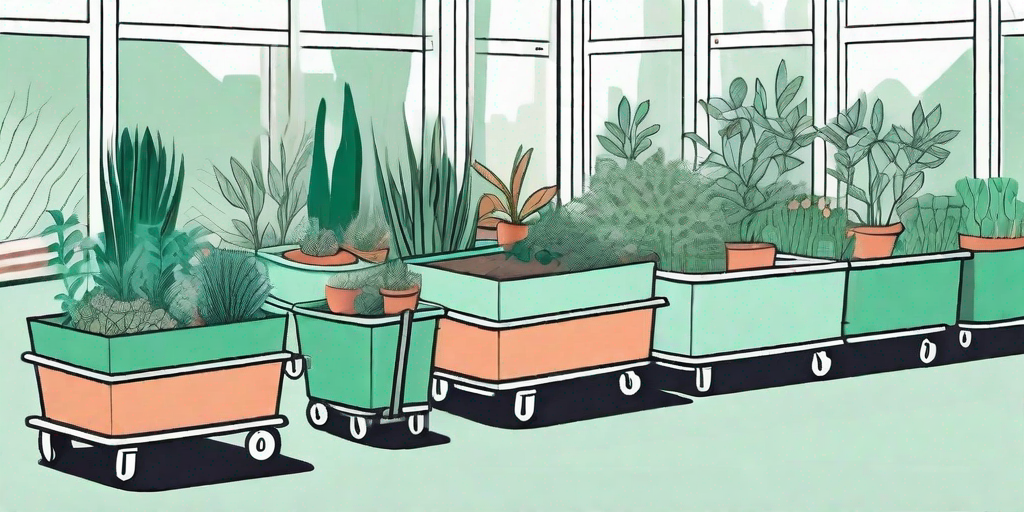
Ever tried relocating a plant and ended up with a handful of leaves and a broken heart? You're not alone. But fear not, this guide will turn you into a plant-moving ninja in no time. Let's dive into the green world of moving plants without causing a botanical catastrophe.
Understanding Your Plant's Needs
First things first, you need to understand that every plant is a unique, leafy individual. They have their own likes and dislikes, just like us. Some enjoy a sunny spot by the window, while others prefer the cool, shady corners. Knowing what your plant prefers is the first step in ensuring a successful move.
It's also important to consider the time of year. Some plants are more sensitive to changes in temperature and light conditions than others. If you're planning on moving a plant during the colder months, you might want to reconsider. Unless, of course, you enjoy the sight of wilted leaves and a drooping stem.
Research Your Plant
Before you even think about moving your plant, do some research. Find out what conditions your plant thrives in. Does it need lots of sunlight? Or does it prefer a more humid environment? Knowing these details will help you choose the perfect new spot for your plant.
Also, consider the size of your plant. If it's a towering monstrosity, you might need to enlist some help. Or, you could always try training it to move itself. Good luck with that.
Preparing for the Move
Now that you've done your homework, it's time to prepare for the move. This involves more than just grabbing your plant and hauling it across the room. There's a method to the madness, trust me.
Start by checking the health of your plant. If it's showing signs of stress or disease, it might not be the best time to move it. Instead, focus on nursing it back to health before attempting the move.
Choosing the Right Pot
When moving a plant, the pot is just as important as the plant itself. A pot that's too small can restrict root growth, while a pot that's too large can lead to overwatering. Choose a pot that's just right for your plant. And no, this isn't a Goldilocks reference.
Also, consider the material of the pot. Plastic pots are lightweight and easy to move, but they can also retain more heat than ceramic or clay pots. Choose a pot that suits your plant's needs and your own moving capabilities.
How to Move Your Plant
Alright, you've done your research and prepared for the move. Now it's time for the main event: moving your plant. Here's a step-by-step guide to help you through the process.
- Water your plant a day or two before the move. This will help it stay hydrated during the transition.
- Prepare the new pot by filling it with fresh potting soil.
- Carefully remove your plant from its current pot. Try not to damage the roots in the process.
- Place your plant in the new pot and fill it with soil. Make sure the plant is stable and upright.
- Water your plant and place it in its new location. Keep an eye on it for the next few days to ensure it's adjusting well to its new environment.
Common Mistakes to Avoid
Moving a plant isn't rocket science, but there are a few common mistakes that can turn your green thumb brown. Here's what to avoid when moving your plant.
- Not researching your plant's needs.
- Moving your plant at the wrong time of year.
- Choosing the wrong pot.
- Not preparing your plant for the move.
- Not monitoring your plant after the move.
Frequently Asked Questions
When is the best time to move a plant?
The best time to move a plant is during its dormant period, usually in the late fall or early spring. This allows the plant to adjust to its new environment before its next growth period.
How often should I water my plant after moving it?
Water your plant immediately after moving it, then follow its regular watering schedule. Be sure to monitor your plant closely for the first few days to ensure it's adjusting well.
Can I move a plant outside?
Yes, but be sure to acclimate your plant to the outdoor conditions gradually. Start by placing it outside for a few hours each day, gradually increasing the time until it's ready to stay outside permanently.
Remember, moving a plant is more art than science. It requires patience, care, and a good sense of humor. But with these tips, you'll be moving plants like a pro in no time. Happy moving!















